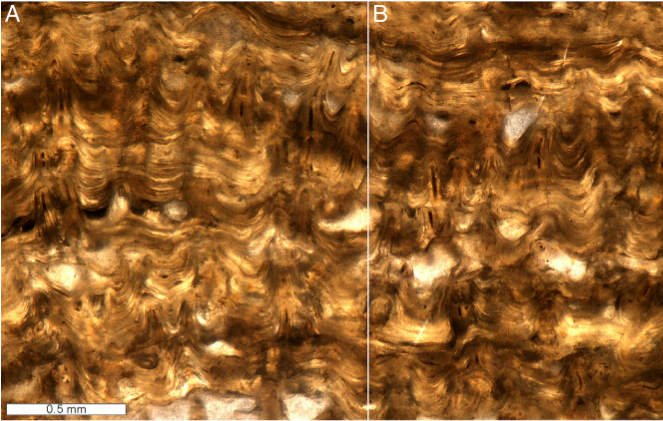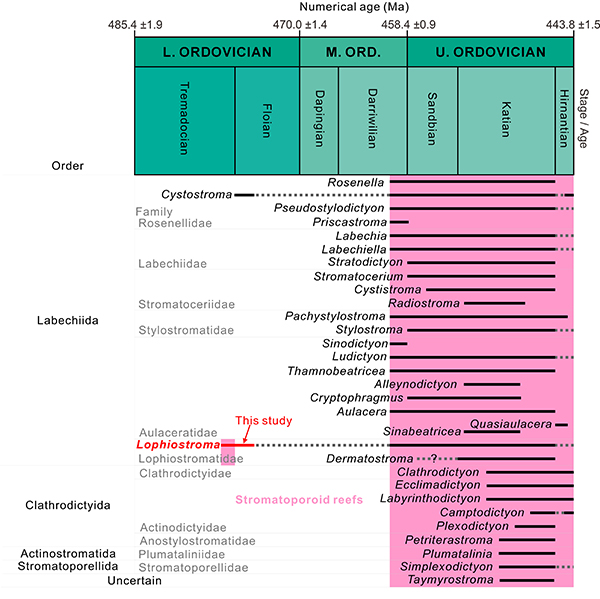Research Highlight from Asia - China-South Korea collaboration discovers oldest stromatoporoid sponge fossil
The Early Paleozoic research team from the Nanjing Institute of Geology and Palaeontology, Chinese Academy of Sciences, in collaboration with South Korean paleontologists, has discovered the oldest known stromatoporoid sponge fossil (dating back 480 million years) in Yuan'an, Yichang. Named Lophiostroma leizunia Jeon sp. nov., this remarkable find represents a breakthrough in paleontological research.

Fig 1 L. leizunia Jeon sp. nov. (A), (B) Longitudinal section
Unlike typical sponges, most Paleozoic stromatoporoids lacked spicules but possessed calcareous skeletons as a defining characteristic. In North America, stromatoporoid-formed bioherms serve as significant hydrocarbon reservoirs.
As iconic shallow-sea reef-building organisms during the Ordovician to Devonian periods, stromatoporoids played roles in reef construction, ecological dominance, and geographical distribution comparable to modern corals.
However, their abrupt integration into reef ecosystems raises intriguing scientific questions: When did the earliest stromatoporoids emerge? How did they develop mineralized skeletons? What enabled their global proliferation and ecological dominance in reef systems?
These questions remained unresolved due to scarce fossil records of early stromatoporoids.

Fig 2 Stratigraphic distribution of stromatoporoids (line) and stromatoporoid reefs (pink shade) during the Ordovician
The discovery stemmed from fieldwork conducted by first author Dr. Jeon Juwon (currently a postdoctoral researcher at Korea University), who investigated Yichang's Early Ordovician reefs under the guidance of corresponding author Prof. Zhang Yuandong from NIGPAS.
"This discovery was particularly unexpected given the extensive prior research on Early Ordovician reefs in Yichang," Jeon explained. The fossil's nomenclature honors Leizu Town near the discovery site, referencing the legendary Chinese figure credited with inventing sericulture. "The sponge's microstructure remarkably resembles woven silk patterns," Jeon noted.
This finding not only extends the fossil record of reef-building stromatoporoids by approximately 20 million years but also provides critical insights into early reef ecosystem evolution and biomineralization mechanisms. The groundbreaking research was published in Proceedings of the National Academy of Sciences of the United States of America (PNAS) on April 1 (Beijing Time).
Reference
J. Jeon, M. Simonet Roda, Z. Chen, C. Luo, S. Kershaw, D. Kim, J. Ma, J. Lee, & Y. Zhang, Phosphatic stromatoporoid sponges formed reefs ~480 Mya, Proc. Natl. Acad. Sci. U.S.A. 122 (15) e2426105122, https://doi.org/10.1073/pnas.2426105122 (2025).
Attachment Download: